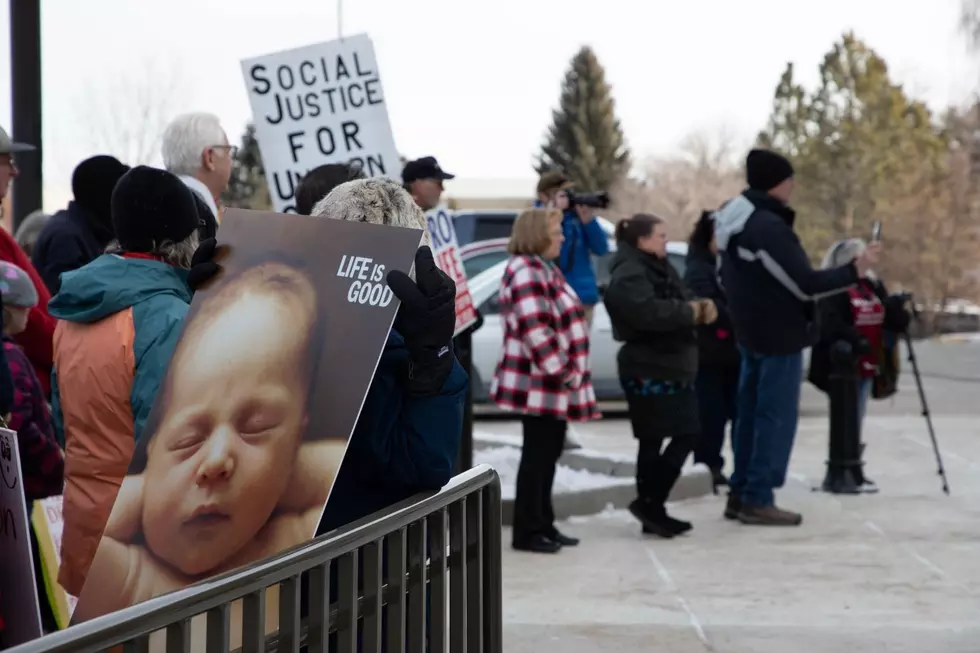
As 2021 Legislature Wraps First Half, Here’s What’s Moving Forward
By Austin Amestoy
UM Legislative News Service
University of Montana School of Journalism
Despite all the challenges brought by the pandemic, lawmakers in the 67th Montana Legislative Session are wasting no time in pushing through a deluge of bills -- some new and untested, some vetoed numerous times before, but all being considered in a new light with a Republican governor in office for the first time in 16 years.
Wednesday, March 3 marked the halfway point of the session and a key deadline called “transmittal.” Any general policy bills not attached to the state budget that have not advanced from the house they originated in are considered dead.
As of the deadline, lawmakers had introduced 1,121 bills between the House of Representatives and the Senate and passed 649 bills to the opposite house. Nearly 350 bills are effectively dead, either killed in committee or on the House or Senate floor or missed the transmittal deadline, and 38 have been signed into law. Twelve bills are headed to the governor for his consideration.
Social issues like abortion, transgender rights and religious freedom, alongside guns, tax policy, and legislation reacting to the COVID-19 pandemic dominated the first 45 days of the session, with the Republican majority in the House and the Senate newly energized to pass long-percolating legislation with the election of Republcian Gov. Greg Gianforte. Despite a conservative wave in the 2020 election filling the House and Senate with new faces, some members of a loose group of moderate Republicans have occasionally joined with Democrats to stop some of the most controversial bills in their tracks. Here’s a look at the issues dominating the 2021 Legislature at its halfway mark:
Abortion Access
The Republican caucus of the 2021 Legislature wasted no time in debuting their plans to address hot-button social issues, including abortion access and transgender rights.
As of now, six bills seeking various restrictions on abortion are on a glidepath to a signature from Gianforte, who indicated his support for the legislation in his State of the State address.
House Bill 136, 140 and 171 are awaiting action from the governor after clearing the House and the Senate, mostly down party lines. HB 136 -- the “Pain-Capable Unborn Child Protection Act” -- would ban abortions after 20 weeks, while HB 140 would require that doctors provide a woman the opportunity to view an ultrasound and listen to the fetal heartbeat before undergoing an abortion.
Both measures were introduced in the 2019 session as well, but former Gov. Steve Bullock vetoed them.
HB 171 seeks to make it harder to access abortion-inducing drugs by restricting delivery of the pills through the mail and by requiring a physician to conduct an in-person examination of a woman prior to prescribing the drugs.
Two more bills -- Senate Bill 315 and House Bill 167 -- would make it a felony for a doctor failing to provide life-saving treatment to an infant born alive following an abortion, earning the provider up to 20 years in prison and up to $50,000 in fines. HB 167 passed the House, was amended by the Senate and is now back in the House, while SB 315 has cleared the Senate in a 30-19 vote and will now be debated in the House.
Earlier in the session, Republican leadership from the House and Senate attributed the rapid pace of the abortion legislation to familiarity with the bills, both from drafters and lawmakers. Republicans in Montana have long prioritized whittling away at abortion acess, though former Republican Secretary of State Bob Brown, who also served in the State Legislature from 1970 to 1997, said he recalls a time when the party didn’t devote so much time to issues of sex and gender.
“The Republican party is now the party of change,” Brown said in an interview. “They used to be the opposite of that. They used to be the party that said, ‘Well, let’s just leave well enough alone.’”
Transgender Rights
Republicans are also assigning high priority to bills on other social issues, including two restricting the rights of transgender people in Montana.
House Bill 112 cleared the House in a 61-38 vote, and would restrict transgender women and girls from participating in elementary, high school, and collegiate women’s sports, instead requiring them to on men’s teams.
The bill is largely untested legislation, having not been considered in the Legislature in prior sessions. Sponsored by Rep. John Fuller, R-Whitefish, it served as a partner to Fuller’s second measure on transgender issues, House Bill 113. That bill sought to restrict access to medical treatments like puberty blockers and hormones for transgender children, but died in the House. However, a resurrected version of the bill, House Bill 427, cleared the House and is heading to the Senate after language in the bill was changed to restrict only gender-affirming surgery for youth.
Democrats, who are in the minority in the House and Senate, have been largely powerless to stop the movement of the abortion legislation. In a call with the press, Senate Minority Leader Jill Cohenour, D-East Helena, said she sensed a theme emerging from Republicans.
“From my point of view, it really is taking away Montanans rights and freedoms,” Cohenour said. “I can’t get past the fact that almost every bill we’ve seen is on social justice issues, rather than the things that are important to Motananans. We’re not talking about education funding or economic recovery; [Republicans] forgot what they told Montanans they were going to do here.”
During debate on a “right-to-work” union bill on the House floor, Rep. Jim Keane, D-Butte, had a similar reaction. He said before the session, when he first heard of the GOP’s “comeback plan” that he was “thrilled,” hoping it would include jobs and infrastructure.
“And I sat here day after day, week after week, month after month. Jobs and infrastructure? No. A lot of social engineering, yes,” Keane said. “The comeback plan, which a lot of these people voted for, hasn’t been here.”
Guns
Lawmakers also passed a bill early in the session to expand concealed carry access in Montana, and that measure is now law.
Gianforte signed House Bill 102 into law on Feb. 18, making it legal for Montanans to carry concealed firearms on college campuses and inside bars and banks, while maintaining the right of private individuals and businesses to restrict guns on their premises.
Following on the coattails of HB 102 are House Bills 258 and 436, which would prohibit enforcement of any potential federal bans on guns or ammunition and prohibit local governments from banning concealed firearms inside publicly-owned buildings, respectively. Both bills cleared the House and are heading to the Senate.
One measure that would have allowed lawmakers to carry concealed in the Capitol failed to pass the Senate in a narrow 24-26 vote, while two bills from Democrats that would have tightened and incentivized the secure storage of guns were tabled in committee.
Budget & Tax Policy
The Legislature is moving forward with a number of bills proposing changes to Montana’s tax structure proposed by Gianforte as part of his “Montana Comeback Plan.”
Senate Bill 159 promises to cut the top income tax rate in Montana from 6.9% to 6.75%, and advanced from the Senate to the House on a 33-17 vote. House Bill 303 would double the business equipment tax exemption to $200,000 and also passed out of its chamber.
Another Gianforte tax bill, House Bill 252 would grant tax credits to businesses to help offset the cost of sending employees to trade school. That bill cleared the House 72-28 and is awaiting a hearing in the Senate. The “Montana Entrepreneur Magnet Act,” which would eliminate capital gains tax on stock sold for a business that meets certain requirements, also advanced from the Senate and awaits further action in the House.
Other bills introduced by Democrats promised progressive changes to fiscal policy in Montana, but were tabled in committee or voted down by lawmakers. House Bill 424, sponsored by Rep. Emma Kerr-Carpenter, D-Billings, would have created a new income tax bracket, taxing those making more than $500,000 per year at a rate of 8.9%. The House Taxation Committee tabled the measure, and committees have tabled all bills from Democrats attempting to raise the minimum wage in Montana.
In an interview, President of the Senate Mark Blasdel, R-Kalispell, touted the progress of Republicans’ tax bills, and said his caucus will be focused on passing a conservative budget in the second half of the session.
“We need to make sure that government growth just isn't based on the amount of money we have,” Blasdel said. “We actually need to restrict and really be conscious of how much money we are putting into these different areas.”
But Democrats are concerned the amount of tax breaks being levied by Republicans will weaken revenue streams and lead to essential services facing the chopping block.
"We’re going to continue to push, as a top priority, making sure we have a balanced budget and making sure essential services don’t get cut,” Cohenour said.
COVID-19 Reactions
Bills reacting to aspects of the COVID-19 pandemic consumed much of the Legislature’s first-half bandwidth as lawmakers drafted bills limiting the powers of the governor and public health officials, and measures to expand exemptions for vaccines.
Senate Bill 65, signed into law on Feb. 10, raced through the Legislature, establishing new COVID-19 liability standards for businesses by raising the bar to bring a lawsuit from “negligence” to “gross negligence.” Gianforte previously said the bill was critical to rolling back the statewide mask mandate, which he did officially on Friday, Feb. 12.
Early in the session, three Republican lawmakers drafted three different bills that sought to put a check on the power of public health officials to make rules during times of emergency. After consolidation, those bills are now one: House Bill 121 would allow local governing bodies to revise, revoke or accept proposed regulations from a health board, and prohibits those boards from limiting attendance at religious gatherings. The two other bills went much further, one of them proposing changing the definitions of “quarantine” and “isolation” to mean the same thing, and the other only allowing health boards to make “recommendations” to a local government. Both were tabled, though elements of them appear in HB 121.
House Bill 230 proposes limiting the amount of time the governor can declare a state of emergency to 45 days, after which the Legislature must vote to continue, amend, or end the declaration, and Senate Bill 67 -- which is awaiting a signature from Gianforte -- would remove criminal penalties for law enforcement officers who fail to uphold a public health regulation. All these bills cleared their initial houses, most down party lines.
Also advancing is House Bill 334, which would broaden medical and religious exemptions for vaccinations for children attending school. However, moderate Republicans joined Democrats in the House in defeating two other vaccine bills: House Bill 332, which would have allowed unproven treatments to serve as acceptable substitutes for vaccine requirements in schools, and House Bill 415, which sought to prohibit discrimination based on vaccination status. Both failed on narrow votes in the House.
House Minority Leader Kim Abbott, D-Helena, called the bills “overreactions to an unprecedented event,” and expressed worry over the Legislature’s attempts to whittle away at emergency powers.
Education
House Bill 143 is awaiting a signature from the governor. Part of his “Montana Comeback Plan,” the bill will provide financial incentives for schools to raise their starting teacher pay. It received bipartisan support in the Legislature.
A much more controversial measure is Senate Bill 99, which would require schools to notify parents of their ability to withdraw their students from sex ed courses. That bill cleared the Senate in a party-line vote and awaits further action in the House.
Meanwhile, in preparation for budget debates, the governor signed House Bill 15 into law, which adjusts the school funding formula to account for inflation.
Missing and Murdered Indigenous Persons
Early in the session, members of the Montana American Indian Caucus raised concerns that their legislation continuing to fund efforts to address the missing and murdered indigenous persons crisis would face opposition. So far, that has not proven to be the case.
Senate Bill 4 and House Bills 35, 36 and 98 have all cleared their houses with bipartisan support, and SB 4 is awaiting a signature from Gov. Gianforte. The measures seek to extend the MMIP Task Force, create a missing persons review commission and response team training program, and extend a grant program to establish a missing persons database.
Election 2020 Aftermath
A package of bills are seeking changes to Montana’s election policy after discourse around the 2020 election turned to claims of voter fraud and election insecurity. There is no credible evidence statewide, nor nationally to indicate widespread voter fraud took place.
House Bill 176 would close voter registration at noon the day before an election and passed the House in a mostly party-line vote. Some Republicans have said they are hopeful the Senate will amend the bill to close registration the Friday before an election. Senate Bill 169 seeks new limitations on voter ID, and also cleared the Senate. Lawmakers brough both bills at the request of Republican Secretary of State Christi Jacobsen.
Bills from Democrats hoping to make the state pay for absentee ballot postage, allow local governments to use ranked-choice voting and lower the age for election judges to encourage youth participation all went down in committee or on the House floor.
Lighter Fare
Not all bills moving through the Legislature promise wide-reaching changes or touch on heated controversial issues. The House voted 92-8 to advance House Bill 291, which would require private insurance companies to cover the cost of hearing devices and services for deaf and hard-of-hearing children. Recently, Gianforte signed Senate Bill 61 into law, granting free fishing for Montanans on Mother’s Day. And, the House voted to repeal a section of law authorizing the creation of a “senior citizens’ legislature” -- something the bill’s sponsor, Rep. Matt Regier, R-Kalispell, believes hasn’t been used since the 1990s. That provided ample chances for jokes on the House floor.
“Representative Regier, by repealing ‘senior citizen’s legislature,’ you don’t mean the Senate, do you?” Rep. Caleb Hinkle, R-Belgrade, asked the sponsor, earning laughter from lawmakers.
As the session enters its last 45 days, observers said focus will shift from social and policy issues to crafting the budget -- a process likely to be difficult this year as the state grapples with the economic fallout of the COVID-19 pandemic.
“As the session wears down, everyone’s sick, everyone’s tired, lots of guys are short-tempered, lots want to go home, so you quit as early as you can,” Bob Brown said, reflecting on his time in the Legislature. “I think you see the most exciting, interesting part of the session the first days when the bills are new. Now, the knuckles are down to the hard work part of the session.”
Austin Amestoy is a reporter with the UM Legislative News Service, a partnership of the University of Montana School of Journalism, the Montana Broadcasters Association, the Montana Newspaper Association and the Greater Montana Foundation. He can be reached at austin.amestoy@umontana.edu.
LOOK: Milestones in women's history from the year you were born
READ ON: See the States Where People Live the Longest
More From 103.7 The Hawk









